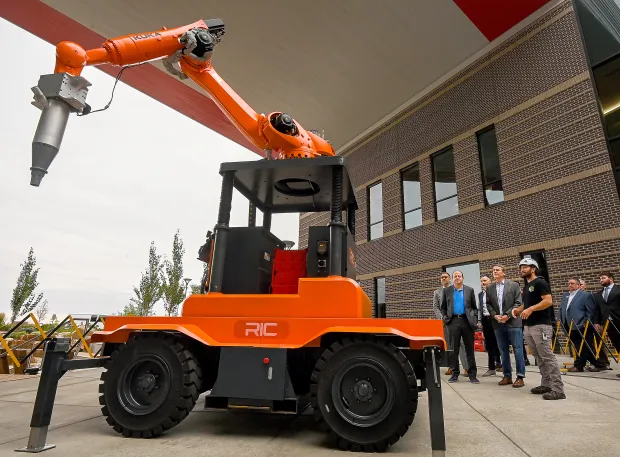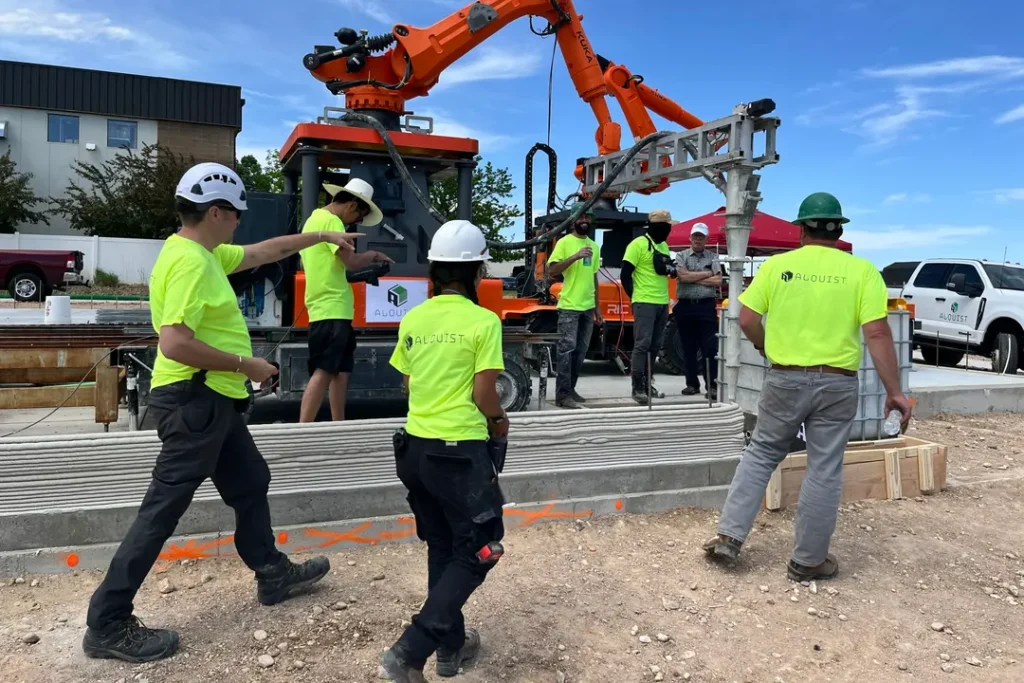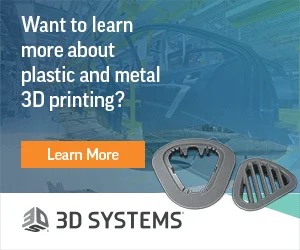Alquist 3D Learns Some Lessons for the Construction 3D Printing Industry
The demolition of a home 3D printed by Alquist 3D spread like wildfire when it was reported last winter. While many took the opportunity to express their skepticism over additive construction (AC), the biggest unanswered question was: what comes next? A recent follow-up by the Des Moines Register tells us some of the story, but not the full picture.
The Register’s Story
Published on June 12th, 2024, the Register story takes a look at some of the behind-the-scenes issues that plagued Iowa’s plans for 3D printed homes. 10 houses were planned to be constructed in Muscatine, but it was only the walls of that first demolished home that were printed. It has been known since last year that the concrete walls the project produced had been having trouble meeting optimal field durability standards—nothing that would’ve made a structure unsafe, but it still gave those on the project enough pause to take it back to the drawing board. From the Des Moines Register:
“Alquist 3D was learning that the process of printing a concrete home is chemically complicated and weather dependent. A 3D printer lays down layers of specialized concrete that need to cure. Theoretically, the concrete is mixed to handle the temperature and humidity levels for each site.“That’s difficult in Iowa, where temperatures can swing up to 120 degrees or more across the course of a year. Texas, by comparison, can be very hot, but the highs and lows don’t vary nearly as much.“In Austin, your average temperature is 73 degrees year-round,” said Tamara Brunow, owner of Council Bluffs-based Brunow Contracting. “But anybody that’s been in construction for more than a few years figures out very quickly that the Midwest is quite possibly one of the most difficult climates to build in.”
“The reason why Florida and Texas have been so favorable for this type of work is because of relatively stable temperatures. [In Muscatine,] we would start printing early between five and six am and it would be 50-ish degrees. By nine, its jumped 20 degrees, by noon its 40. Every time you go to a new climate, it requires an R&D process. This is the big thing that we learned. “
Workforce Development
Unfortunately, climate acclimatization was not the only hurdle that impacted Alquist’s work in Iowa. Per Mannheimer, the project struggled to recruit and retain a workforce to make printing and completion of the homes a reality. An initial selling point of the Iowa project was local job creation and a partnership with local universities to create a pipeline to 3D printing construction jobs. Sadly, the educational programs never materialized at Iowa institutions and neither did any other bridge between Iowa job-seekers and roles with this project. At least two workers trained and recruited by Alquist were asked to join their team and relocate to the companies new headquarters in Colorado, but it simply wasn’t possible to train and leave behind the corps of AC workers in Iowa that Alquist had planned on.
“We struggled with finding the right people, but you know, that’s not an Iowa problem. That exists everywhere,” Mannheimer said.
While recent reporting indicates that Iowa currently has more people employed in construction than it has for the last three decades—a record 85,200 workers—there is another side to those digits. Despite the record number of people in the state currently working in construction, there are still 58,000 open jobs and about 50,000 people on the job market. It goes without saying that every jobseeker isn’t right for every open position, but clearly a gap exists between the demand for skilled construction labor and those seeking employment. There’s an important lesson here for policymakers and investors: it is simply not enough to invest in additive manufacturing projects that will bring jobs. You need to make sure people know those jobs exist.
I’ve personally been on the “public” side of public/private development projects. You can do as many press releases and five o’clock news spots you want, but or every person you reach there’s five you missed—if you’re lucky. 3D printing could very well lead to a reduction in construction labor, but that can’t happen without connecting the right workers with the right jobs. This is a problem afflicting construction nationally and it’s something any AC project would have to overcome.
Alquist Looks Ahead
Despite parting ways with Iowa, Alquist continues to use the lessons it learned on that project to move its work forward. While it lacked a dedicated headquarters a few years ago, the company is now comfortably based out of a warehouse in Greely, Colorado. This new HQ has given the team at Alquist the space to work on R&D for future projects. The size of its team has also almost doubled since relocating to Colorado, including a slew of material scientists.
Taking another lesson from its experience in Iowa, Alquist has partnered with Aims Community College to launch a course in 3D Concrete Printing. This program will begin this summer and will be housed in the college’s workforce innovation center when that launches next year. Alquist’s hope is that this program will serve as a feeder for AC projects it hopes to undertake in northern Colorado.
“Now, instead of us searching for people for projects, it’s the opposite. People take the course, they get trained. If they finish the course, we’re gonna hire them.”
Currently, Alquist is focused on spreading its wings in Colorado. Utilizing its new HQ, Alquist’s team is printing curbs, concrete planters, and other infrastructure to be used by the city of Greely – but they’re also working with Habitat for Humanity to print homes for the city as well. The company has its eyes on further construction projects as well, with announcements planned to roll out this summer.
Despite a small setback, the team at Alquist is moving forward with optimism and bold ideas. While the road to establishing 3D printing as a mainstay of the American construction industry is sure to have more hurdles, companies like Alquist are determined to adapt and overcome. The future of additive construction is still promising, with each challenge serving as a step towards more resilient and efficient building practices.
Subscribe to Our Email Newsletter
Stay up-to-date on all the latest news from the 3D printing industry and receive information and offers from third party vendors.
You May Also Like
Prusa Launches its First High-temp 3D Printer, the Pro HT90
Prusa Research essentially dominates the desktop 3D printing space. Their i3 design is the predominant 3D printer design worldwide, with millions of 3D printers being made each year based on...
3D Printing Success in 3D Printed Minis
An unsung 3D printing success is in 3D printing minis, or miniatures. For over a decade and a half, tabletop gamers, players, and creators have been making 3D printed minis....
Unveiling Dyze Design’s Zephyr High Flow Extruder: Revolutionizing High-Speed 3D Printing
Dyze Design, the Canadian expert in high-performance extrusion systems, introduces its latest innovation, the Zephyr™ High Flow Extruder for 1.75mm filament. This state-of-the-art extruder leverages Dyze Design’s MeltCore™ technology, delivering...
Slant 3D’s API Opens Democratizes 3D Printer Farms
Slant 3D, known for its 3D print farms comprising cost-effective material extrusion machines, has been a subject of our discussions since our interview with founder Gabe Bentz and an article...


































